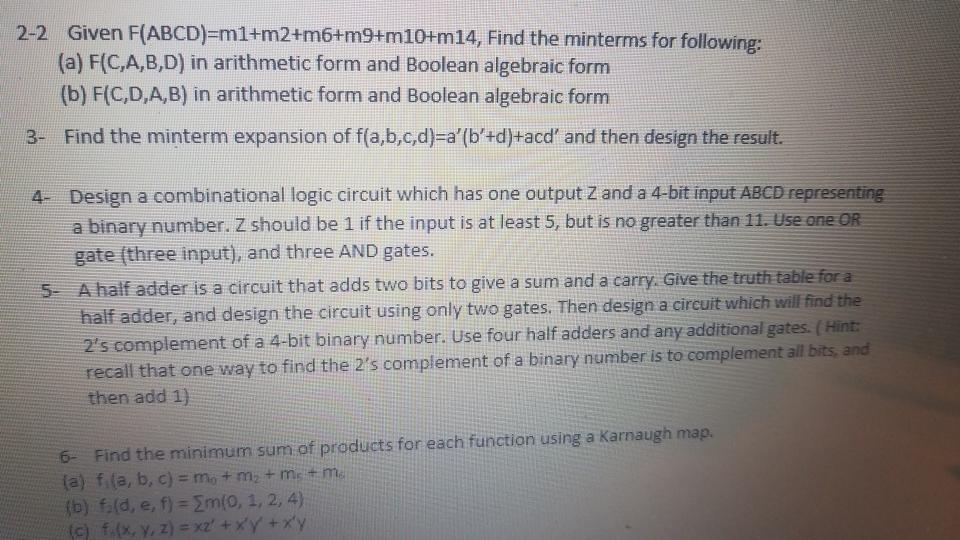Answered step by step
Verified Expert Solution
Question
1 Approved Answer
2-2 Given F(ABCD)=m1+m2+m6+m9+m10+m14, (a) F(C,A,B,D) in arithmetic form and Boolean algebraic form (b) F(C,D,A,B) in arithmetic form and Boolean algebraic form 3- Find the

2-2 Given F(ABCD)=m1+m2+m6+m9+m10+m14, (a) F(C,A,B,D) in arithmetic form and Boolean algebraic form (b) F(C,D,A,B) in arithmetic form and Boolean algebraic form 3- Find the minterm expansion of f(a,b,c,d)=a' (b'+d)+acd' and then design the result. Find the minterms for following: 4- Design a combinational logic circuit which has one output Z and a 4-bit input ABCD representing a binary number. Z should be 1 if the input is at least 5, but is no greater than 11. Use one OR gate (three input), and three AND gates. 5- A half adder is a circuit that adds two bits to give a sum and a carry. Give the truth table for a half adder, and design the circuit using only two gates. Then design a circuit which will find the 2's complement of a 4-bit binary number. Use four half adders and any additional gates. (Hint: recall that one way to find the 2's complement of a binary number is to complement all bits, and then add 1) 6- Find the minimum sum of products for each function using a Karnaugh map. (a) f(a, b, c) = mo + m +me+ Me (b) f(d, e, f) = m(0, 1, 2, 4) (c) f.(x, y, z) = x2 + xy + xy
Step by Step Solution
There are 3 Steps involved in it
Step: 1

Get Instant Access to Expert-Tailored Solutions
See step-by-step solutions with expert insights and AI powered tools for academic success
Step: 2

Step: 3

Ace Your Homework with AI
Get the answers you need in no time with our AI-driven, step-by-step assistance
Get Started


